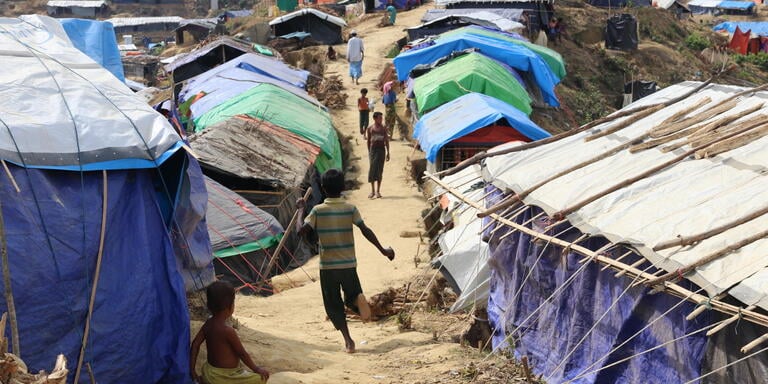
"Despite all the efforts that are now taking place, it will not be enough to keep the refugees safe if a cyclone hits. The Rohingya are at the mercy of the elements and even a small storm will push them over the edge", says Benedicte Giæver, Director of the global expert deployment capacity, NORCAP.
More than 688.000 Rohingya have fled Myanmar for Bangladesh, to escape the violence that started in the Rakhine state in August last year. There are currently more than 883.000 refugees in Bangladesh. Despite Bangladesh's significant experience of disaster management, the sheer volume and speed of arrivals have overwhelmed the authorities and the humanitarian community.
Frustrated and scared
The camps, which are currently home to the majority of these refugees, are some of the world's most densely populated. The area is stripped of vegetation, making it prone to landslides and flooding when the rains come. The refugees live in huts constructed from bamboo and plastic sheeting, as they are not allowed to put up permanent structures. These simple shelters will not protect them from the monsoon rains and cyclone season, which are expected to hit the area in April.
"Our experts report that people are frustrated and scared, especially families with young children, pregnant women, elderly and those with disabilities. They want to be able to evacuate to safe shelters, but there is nowhere to relocate all of them," Giæver says.
Floods, landslides and diseases
Aid agencies are making adjustments in the camps, to reduce the risk of flooding and landslides and reinforce current shelters. People have received material to make small improvements and a small number of families have been relocated. However, relocation and installing protective infrastructure, such as windbreakers, is extremely challenging, due to the crowded camps and the hilly topography in the area.
Recent assessments by UN agencies estimate that about 200,000 refugees could be affected by flooding and landslides, brought on by the monsoon rain. Additional thousands could be affected due to diseases, as a result of broken and contaminated water points and latrines.
NORCAP currently has 23 experts working with various UN agencies in Cox’s Bazar, covering areas such as camp management, public health, water, sanitation and hygiene, education, gender-based violence and communication with communities. The deployments are supported by the Norwegian Ministry of Foreign Affairs.
Aid agencies work closely with the Bangladesh authorities to find solutions and the government has allocated some additional land for the relocations.
"The Bangladeshi people have a lot of experience in dealing with this weather pattern and are key to alleviating the future suffering of the Rohingya refugees. Although they have been overwhelmed in this emergency, they have shown remarkable hospitality and must continue these efforts. However, they cannot face this challenge alone, they also need significant support from the international community", says Benedicte Giæver.








